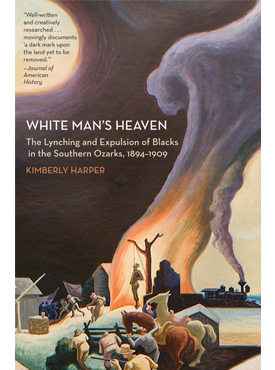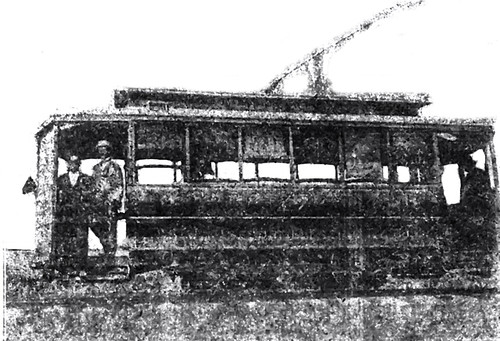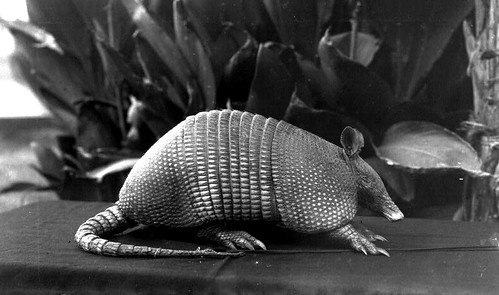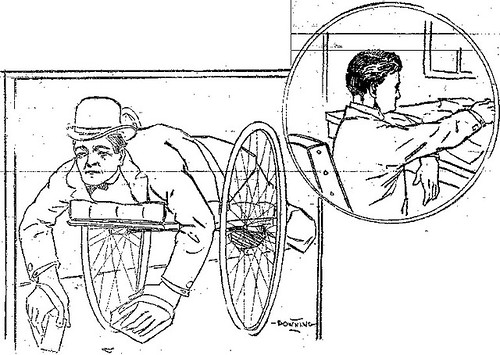In 1907, the Joplin Police Chief Myers shared some of the letters he received on a daily basis with the Joplin Globe. The letters offer a glimpse of life in Joplin and the surrounding areas. Some the letters he received were mundane, such as the following letter:
“Cherryvale, Kan., Oct., 21, 1907.
Joplin City Marshal, Joplin, Mo.
Will you please see and inform me if there are any girls wanted to attend to lunch counters. If so, I can send an experienced one, and please give me the number and the price of wages. Let me hear soon. Respectfully,
S.A.T.”
The Globe jauntily remarked, “The chief of police has not answered the above letter because of the fact that he is not running an employment agency. In fact, if the chief answered all of the letters of this nature he receives he would have to hire a private secretary.”
Another letter that Chief Myers received read,
“Cassville, Mo. Oct. 22, 1907.
Chief of Police, Joplin, Mo.
Dear Sir — Will you please inform me by enclosed card if a woman by the name of Ella Hailey is in your city. She may be working in one of your hotels. Please phone hotels and see if she is there. Oblige, A.C.H.”
The Globe noted that the “last letter is somewhat out of the ordinary as he addresses the chief as ‘dear sir’ and actually says ‘oblige’ in ending his letter. The majority of the letters simply tell the chief of what they desire him to do and let the matter pass.”
Other letters were in response to an earlier missive from a Joplin man, C.T. Plimer, who was hunting a wife. One woman from Platt City, Missouri, declared, “Now please understand I am not a man hunter, for I never gave this subject much thought. I think that I will fill the bill and the description, except having the several thousand dollars. I have some nice property here. I have visited in Joplin and like your city very much.”
The “most amusing letter” that Chief Meyers received, according to the Globe was one from an African American man in Fort Scott, Kansas, who wrote,
“City marshal, be on the lookout for a young colored woman by the name of Leatha B—-. She is a brown skin, good looker, good hair, a pair of earrings with blue sets, and a finger ring with a blue set in it. She might go by the name of Leatha C. She wears a long black coat, a black hat turned up on the side with a band with a red stripe in it, a nice black dress, and a changeable silk underskirt. I just bought them for her. There is a young brown skin man by the name of Will Julien. If you catch them arrest them both and lock them up until you hear from Butler or Mr. George Julien. If she is there and ain’t working and running the streets, make her leave town. Yours truly, Andy B.
P.S. — Make her come home; she ain’t got no business down there. I have got a good home for her and she don’t want for nothing. Make her leave town. She left this afternoon at 3 o’clock. Telephone back at my expense.” — Andy B.
We’re not sure if Leatha returned to Andy B. in Fort Scott or not, but it was probably not the last time that Chief Myers received a letter from the hopeful and the lovelorn.
Source: The Joplin Globe
 It’s been awhile, but it seems only natural to recommend a good book to help us understand these turbulent times. If you have not read it,”White Man‘s Heaven: The Lynching and Expulsion of Blacks in the Southern Ozarks, 1894-1909″ by Kimberly Harper explores the complex racial dynamics of the early twentieth century Ozarks. If you are like us, you might have grown up in Southwest Missouri during a time when there were few, if any, people of color in your community and wondered why. Well, this is why. One reader called it the Ozarks version of “To Kill a Mockingbird.”
It’s been awhile, but it seems only natural to recommend a good book to help us understand these turbulent times. If you have not read it,”White Man‘s Heaven: The Lynching and Expulsion of Blacks in the Southern Ozarks, 1894-1909″ by Kimberly Harper explores the complex racial dynamics of the early twentieth century Ozarks. If you are like us, you might have grown up in Southwest Missouri during a time when there were few, if any, people of color in your community and wondered why. Well, this is why. One reader called it the Ozarks version of “To Kill a Mockingbird.”





